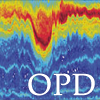
|
James Chen Research Scientist / Engineer III jamchen@uw.edu Phone 206-221-2521 |
Education
BS Electrical Engineering, University of Urbana-Champaign, 2019
|
Publications |
2000-present and while at APL-UW |
Passive acoustic environment in Kao-Ping submarine canyon at the southwest of Taiwan Chen, J., B.B. Ma, Y.-J. Yang, and L. Chiu, "Passive acoustic environment in Kao-Ping submarine canyon at the southwest of Taiwan," In Proc., OCEANS 2024, 15-18 April, Singapore, doi:10.1109/OCEANS51537.2024.10752611 (IEEE, 2024). |
More Info |
15 Nov 2024 |
|||||||
|
The Kao-Ping Submarine Canyon (KPSC) located in southwest Taiwan which has abundant shellfish supporting nearby fishing activities at Donggang township. There are ferries en route to and from Liuqui island, mostly for tourist activities. The submarine canyon traps suspended fine-grained sediments morphologically with episodic large river discharges after intensive rainfall triggered by tropical storms. Various biophony, geophony, and anthrophony sound sources make it a unique location for studying the acoustic environment in the submarine canyon. We deployed a subsurface mooring equipped with a passive acoustic array, Acoustic Doppler Current Profilers (ADCPs), Conductivity-Temperature-Depth (CTD) sensor, and turbidity sensors at the depth ~350 meters along the thalweg line for a period of three weeks. The acoustic array comprises four hydrophones configured as a vertical line array. Each hydrophone is precisely spaced 30 cm apart with a sampling rate of 64 kHz. The ancillary data collected includes meteorological data from a surface buoy nearby. Acoustic array data is analyzed using an unsupervised machine learning program. Utilizing cluster analysis, the audio data is grouped into distinct regions characterized by either high or low frequencies. Preliminary findings indicate that the ambient noise spectrum is primarily dominated by episodic ferry noises throughout the day. During the night, the acoustic spectra in the low-frequency band (< 3 kHz) shift to biological sources. Detecting and classifying other geophony sources such as wind, rain, and hyperpycnal flows prove to be challenging due to the dominance of strong anthropogenic sources in the region. A detailed statistical description of the ambient noise content will be presented based on the data collected. |
|||||||||
Passive acoustic measurements on autonomous profiling floats Ma, B.B., J.B. Girton, J.H. Dunlap, J.I. Gobat, and J. Chen, "Passive acoustic measurements on autonomous profiling floats," In Proc., OCEANS 2023 MTS/IEEE U.S. Gulf Coast, 25-28 September, Biloxi, MS, doi:10.23919/OCEANS52994.2023.10337032 (IEEE, 2023). |
More Info |
11 Dec 2023 |
|||||||
|
The Electromagnetic Autonomous Profiling Explorer (EM-APEX) float provides temperature, salinity, pressure, and ocean current measurements. We implemented a passive acoustic hydrophone system for the EM-APEX to measure the ambient sound of the ocean. Two EM-APEX acoustic floats were built, and five deployments were made in Puget Sound off the Washington Coast, and Hawaii. Time-averaged and frequency bin-averaged acoustic spectra were transmitted to the shore station in near real-time via the Iridium connection, and the raw acoustic data were recovered post-deployment for source classification and acoustic environment study using machine learning methods. The results confirmed that ambient noise levels from this platform could be used to derive sea surface processes such as wind speed, and the transient noise from ship traffic and calls of marine mammals can be detected when floats are in depth-holding mode. |
|||||||||






